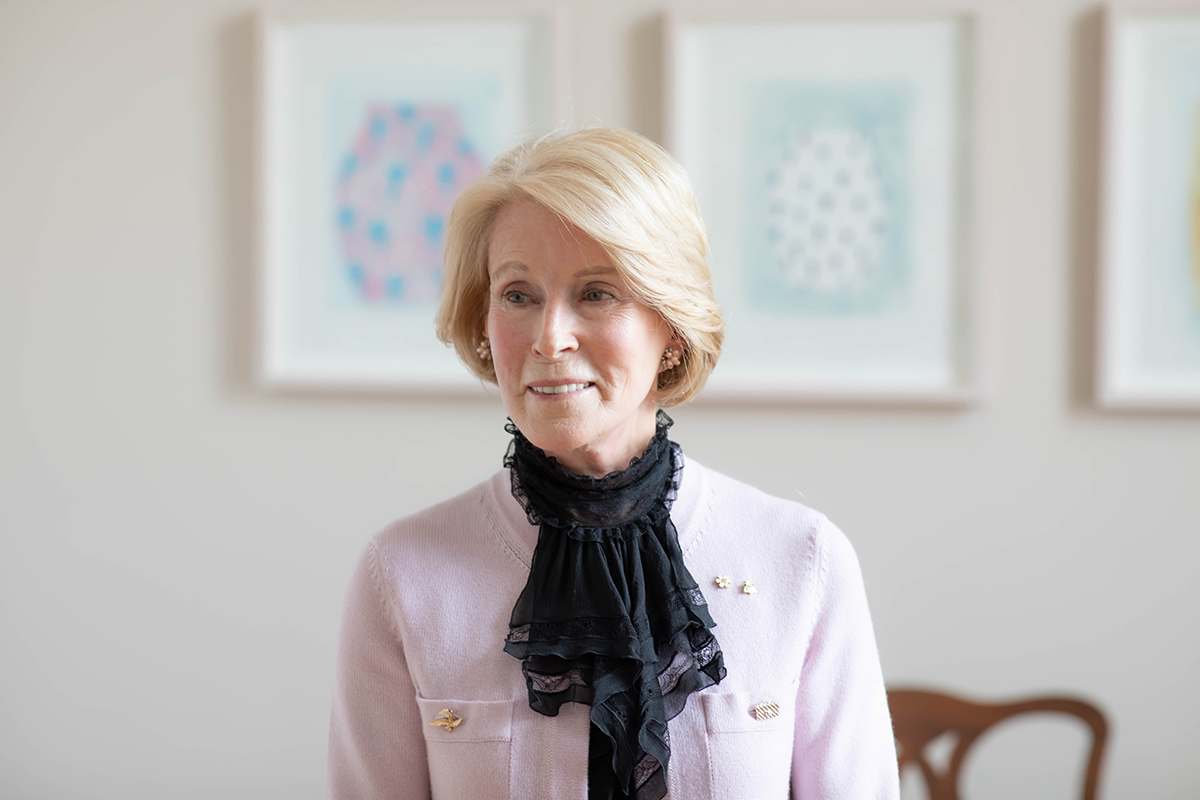University of Toronto Chancellor Rose Patten says there is one skill that has served her especially well throughout a career spanning more than three decades: the ability to adapt to change.
It’s a quality that Patten says is paramount for today’s leaders as they confront the tumult of global crises, changing demographics and technological revolution – and it is a central theme in her latest book, Intentional Leadership: The Big 8 Capabilities Setting Leaders Apart.
In writing her book, Patten drew from her success in Canada’s financial services industry (including senior executive roles at BMO and Manulife), academia, healthcare and the public sector – as well as her experiences shepherding the next generation of leaders as co-director of the Executive Leadership Program at the Rotman School of Management.
“I believe that everyone can be a better leader, but you have to have willingness, intention and resolve,” says Patten, who is an adjunct professor at Rotman. “You have to understand what is most relevant to be effective today, because it’s not the same as yesterday.”
Patten spoke recently with U of T News reporter Adina Bresge.
Why did you write this book?
This book was not on my bucket list. My growing passion in leadership came from all the wonderful roles I’ve performed throughout my career – and learning what kind of leadership was most effective and what was not.
What was your starting point?
There’s an idea that “once a great leader, always a great leader.” That’s a common but flawed opinion. Leadership is not timeless. What got us here won’t keep us here because context matters. I quickly learned that effective leadership is about what’s needed now, not what worked yesterday.
I began to explore three questions. The first was: What are the game changers happening in our world that no one is exempt from?
The second question became: If these are the game changers, what is it that leaders will have to do differently?
The third question was: How do you compel leaders to change? Some leaders might not think they need to change, and others might not know how. Changing habits is hard – leadership is hard – so you need to be very intentional in order to keep up.
What are the game changers?
For a long time, leaders were singularly focused on the shareholder. Now it’s about stakeholders – customers, employees, students or another group. These stakeholders are looking for what I call “the three Ts” – trust, truth and transparency. There is a big difference now in how leaders have to incorporate these into who they are, what they do and how they lead.
Another change is so apparent it hardly needs explanation: the workforce; it has become more multicultural and more multi-generational. And this is changing what’s expected from leaders and how employees want to interact with an organization. The pandemic changed this, too.
You have to understand what is most relevant to be effective today, because it’s not the same as yesterday.”
A third relates to strategy. A strategy used to be considered “done” and you’d be safe for three to five years. Now, your strategy is constantly changing. And what’s underpinning that change is digitalization. This isn’t going away, so short-lived strategies are here to stay – and this will only become more complex.
How has the leadership pendulum shifted?
We have in our mind a certain model of leadership – often called “command and control” – that was considered most effective in decades past. In this model, being a great leader meant being tough, unflinching and quite hierarchical. I would call it a vertical approach.
Now, we see people in the workplace looking for leaders to be more accessible and to engage with them. It goes two ways: leaders are connecting more with employees down the line and are also utilizing those connections for their own decision-making. Leaders don’t have all the answers, no matter how smart they are. They want to utilize all the knowledge that’s available to them. That means getting the best talent and engaging them.
I think we’re shifting from “command and control” to “connect and collaborate” – from instinctive leadership to reflection and intention.
In your book, you describe the “Big 8” leadership capabilities. What are they?
The real driver of the “Big 8” is that they’re all entwined with how you deal with people. The human side of leading is on the rise.
The first three are centred around mindset: personal adaptability, strategic agility and self-renewal. It’s about having an open mind, being willing to change your mind and being self-aware about how you could do better.
Then we move on to personal values. One is empathy, which is about how you relate to others. The next is about who you are, what you stand for and how you act on that.
The next three relate to connecting with others. First, there’s contextual communication: today’s workforces want to understand “the why” of decisions. Then, there’s spirited collaboration: People think of collaboration as creating harmony, but sometimes to get the best outcome you need to allow for a bit of spirited dissent. The last one is about developing others – because, at the end of the day, the mark of a good leader is not what they’ve personally achieved, but how they’ve led others to be their best.
How do you think this book could empower new kinds of leaders?
Leadership happens when, by intention or not, someone has a positive impact on someone else through inspiration, wisdom or empathy. That, to me, describes leadership in its broadest sense. And I believe that this is what the book can do. It’s not targeted. It’s universal. Anybody can be a leader if they have the will and the fortitude.
This article first appeared at U of T News.
Recent Posts
People Worry That AI Will Replace Workers. But It Could Make Some More Productive
These scholars say artificial intelligence could help reduce income inequality
A Sentinel for Global Health
AI is promising a better – and faster – way to monitor the world for emerging medical threats
The Age of Deception
AI is generating a disinformation arms race. The window to stop it may be closing





